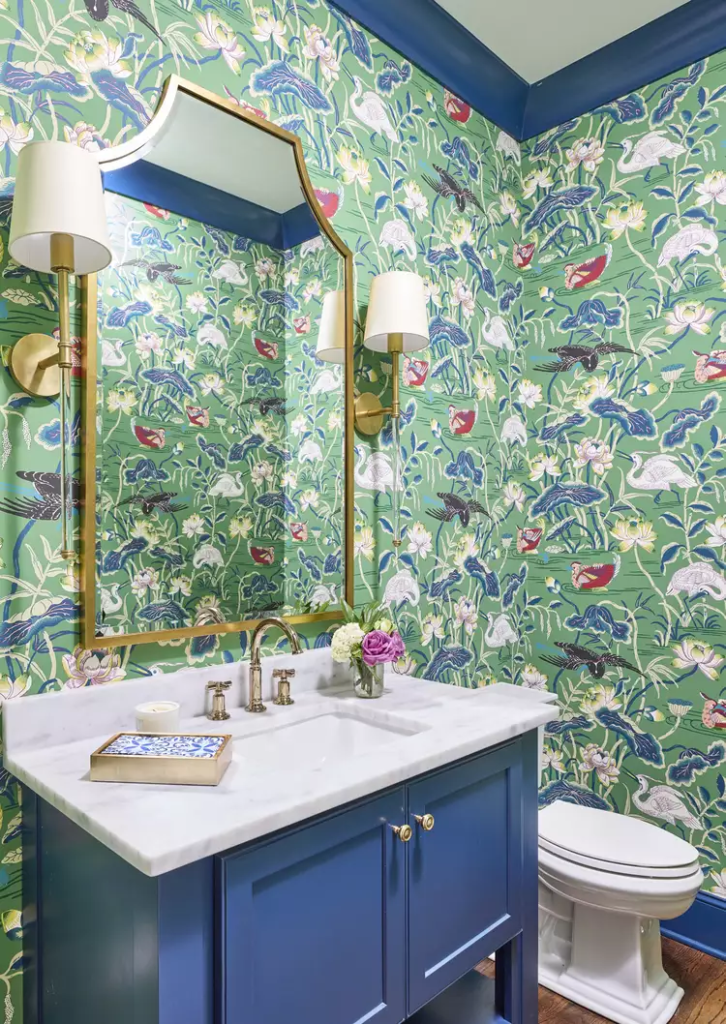Don’t be scared of the dark!

There’s a reason why every episode of House Hunters includes a request for natural light. According to UCLA Health, studies show that it’s good for both our mental health and our physical health, improving sleep, decreasing stress, and more. (Unrelated: It also provides prime selfie lighting.) If you’re stuck with a space that’s low on windows and you can’t exactly afford to renovate, follow these suggestions from four southern interior designers and start brightening things up.
Lots of Lights
This sounds obvious, but it’s not as simple as one extra large fixture. “Light must come from a variety of sources ranging from overhead and task to table and standing lamps,” explains Katharine Rhudy, founder of Reed & Acanthus Interior Design in New Orleans, Louisiana.
A tip from Amber Guyton, founder of Blessed Little Bungalow in Atlanta, Georgia: “Adding lights with soft bulbs will brighten the space while keeping it inviting.” Using harsh fluorescent bulbs may technically accomplish the goal, but the lack of warmth will feel even more stressful than the lack of natural light.
:max_bytes(150000):strip_icc():format(webp)/2039014_ideah0016_0_0-1-d4b455a6e98f47b5ab9c8eac33554d8a.jpg)
Reflective Materials
The classic example of this is mirrors, which can actually do much more than light up a space. According to Guyton, “mirrors can fool the eye into thinking the space is bigger than it is, and can widen a room without moving a wall.”
Maggie Griffin, founder of her namesake interior design firm in Gainesville, Georgia swears by a high gloss sheen on white or light ceilings because it can “give a fun reflection to the space and bounce the light off of the light sources in the room.” Metallic fabrics are a go-to of hers as well.
Light Finishes
For Rhudy, “Light colored walls reflect more light, so painting walls a soft neutral will make the space feel brighter,” explains Rhudy. “The same goes for floors—stay away from dark floors that absorb light and keep wood, carpet, and tiles on the lighter side.”
Painting walls is certainly easier to execute than refinishing or replacing floors, but you can get around this with light-colored rugs. If you have kids or are trying to outfit a high-traffic area, something washable like a Ruggable or a natural fiber like jute, sisal, or seagrass will get the job done in a low-maintenance way.
Incorporate Nature
In windowless powder rooms, Bethany Adams of her namesake interior design firm in Louisville, Kentucky prefers to use interesting wallpaper that references nature. The concept is brilliant: bring the outside, the source of natural light, inside. This strategy can easily be utilized in other spots without natural light, and be especially appropriate in mudrooms, family rooms, and kitchens.
Another option, if patterns aren’t quite your thing: colors found in nature. A pale yellow reminiscent of sunshine or a pastel blue picked from a cloudless day can have the same effect when utilized correctly.
:max_bytes(150000):strip_icc():format(webp)/small-space-decorating-2016-2461301_lulie4417-1-22d1917a97de4b888f265bc131b576e7.jpg)
Work in Color
Yes, the name of the game is light and bright, but the rules aren’t ironclad. “Using pops of color in pillows and smaller pieces will add personality,” Griffin says. Just like with any other interior design situation, layering your favorite colors in a space can also bring joy.
As mentioned before, if your preferred hues also happen to be found in nature, even better. Though technically counting as pops of color, staying away from dark shades like plum and navy in large quantities is helpful as well.




